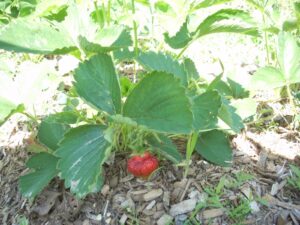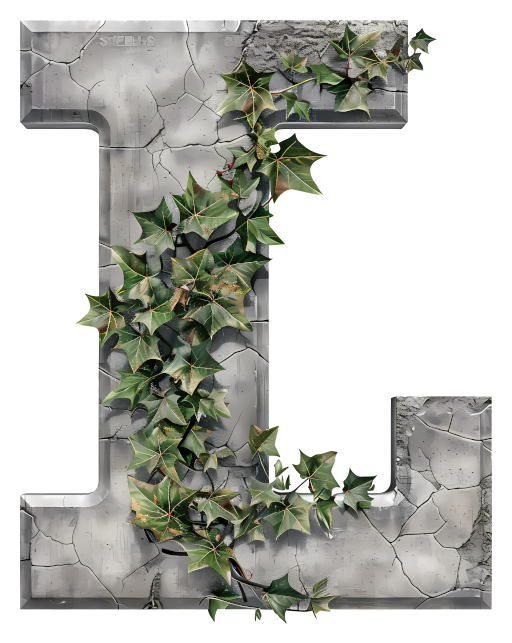There are two main types of plants in the world: annuals, which you plant from seed (or cutting or slips or whatever) each year, and perennials, which come back every year.
Some examples of annuals are cucumbers, lettuce, potatoes, peppers, and zucchini. Each year, you need to plant new plants. Each year, they complete their life cycle entirely in the span of one season. You get seeds (or slips or cuttings or whatever) from them to plant again next year.
Some examples of common perennials are asparagus, rhubarb, many kitchen herbs (sage, thyme, and chives in particular), horseradish, and strangely enough, tomatoes. With all but the tomatoes, you plant them once and then harvest each year after they’re established. Tomatoes are technically perennials, in that they can be kept from year to year if you’re in a warm enough climate. Up here in the north where I am, we treat them as annuals, but if you have a hot house or you live in a warm area, you can keep them alive and producing without having to replant each year.
Annuals are important. They’re here for a brief season, they grow, and we harvest them. The majority of vegetables we eat are annuals. You can pick up pre-sprouted annuals like cucumbers and peppers at your local feed store each spring. For those of us with a yen for gardening, going to Agway is a dangerous thing right now. Somehow, these plants always end up in my dang trunk… You can also pick up seeds, both for indoor seeding and for planting right outside in your garden beds.
Perennials, though, are even more important (in my opinion, of course). With perennials, you plant once, harvest for years. As I get older, I look for more and more perennials so that I have less work to do in the garden each summer! An asparagus bed will keep giving for 20 to 40 years, with nothing more than an occasional fertilizing and weeding. Rhubarb, too, doesn’t require a lot. You do have to “split” it up into bits every five to eight years, to keep it healthy and growing, but that’s not too arduous. Some of my herbs have been in my garden for more than a decade, and are coming along very well. I recently had to get medieval on my oregano, because it was escaping its enclosure and getting into the lawn. While that smells nice during mowing time, it’s a waste.

When it comes to perennials, you want good, solid beds for them. I made the mistake of planting my asparagus in a bad spot against the house when we moved here. During the pandemic, I took it on myself to move it, and it didn’t like it. I lost a lot of the crowns. I now have to re-do the whole bed. I am considering picking up one of the galvanized metal raised beds for it, because $60 really isn’t that much to pay for a solid, rust-free bed that will be there for a long time. While the roots of my asparagus will likely go deeper than the one foot allowed by the bed, these beds don’t have bottoms. This means that the ground below the bed is also available for the plants to use. My asparagus will get good anchorage in such a bed, and will be high enough that I won’t have to worry about mowing around it. And of course it can be painted.
Some perennials that are of use from a prepping standpoint are kale, chives, egyptian walking onions (if you’re near Keene NH and want some, PLEASE arrange to get them from me, because my bed runneth over… literally), most berries (strawberry, raspberry, blackberry, elderberry, etc.), some types of leek, fennel, grapes, some types of tea (depending on where you are, there are limits on what will grow), some specialized breeds of potatoes, sunchokes, roses (for the rosehips, which are high in Vit C), ground cherries, watercress, fruit trees (peaches, plums, apples, pears, cherries, etc.), hops, meadowsweet, and Jerusalem artichokes (aka sage tubers). Obviously this is not an exhaustive list. There are thousands of perennials, and if you want to know what grows best in your area, check in with your Agricultural center. They’ll know. They may even have free or low cost seeds if you’re willing to grow them, as too many people want to grow hybrids and GMO seeds.
My main perennials are my herbs, some rhubarb, the asparagus, and my egyptian walking onions. We have an ailing apple tree, but as with many fruit trees, apples don’t do well without a companion. This one’s on its own, and if we don’t get it a friend soon, I suspect it’ll die on us. Unfortunately, apple trees are expensive. If you’re willing to grow one from seed, it’s well worth it, but it takes a LONG time. When we lived on our farm, we had a 100+ year old pear tree. It was so tall we had to use a backhoe with a huge extension ladder in it to get to the fruit (yeah, I know, OSHA would cry at the very thought lol). I wish I’d saved seeds from those pears…
Here’s the thing with perennials: even if they don’t feed you, they’ll feed your kids, and maybe your grandkids. They’re the ultimate in long-term prepping. It’s basically free food. You pay for it once, and then it’s just a little “sweat of the brow” to keep them growing, but very little in the grand scheme of things. If you plant them now, while you’re able, they’ll feed you well into your old age.
Do you have any perennials on your land? What are your favorites?

